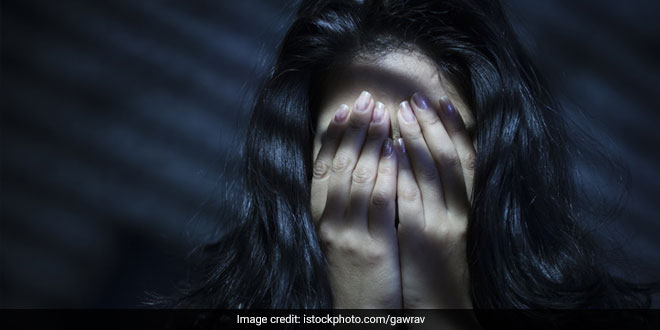New Delhi: World Health Organisation says that every 40 seconds, someone in the world takes their own life. It states that 75% of these cases are from low- or middle-income countries. WHO states that India has the highest suicide rate in South-East Asia. In 2019, the country reported the average of 381 suicide cases daily. It also said this rate increased in 2019 by 3.4% as compared to 2018. WHO also stated that 50% of these cases were from five states – Maharashtra, Tamil Nadu, West Bengal, Madhya Pradesh and Karnataka. Breaking it down in terms of gender, WHO said that for every 100 suicide deaths, 70.2 were male and 29.8 were female. Many studies have also pointed out time and again that suicide is the leading cause of death in India among 15-29 year olds.
Also Read: Each COVID-19 Surge Poses A Risk For Healthcare Workers: Post-Traumatic Stress Disorder
According to National Crime Records Bureau, deaths due to suicide has shown an upward trend in India. As per the data, in 2016, 1,31,008 people died annually from suicides. In 2018, it went up by 2.68% in 2018 to 1,34,516 and in 2019 it went up by another 3.42% to 1,39,123.
Experts think suicide is preventable, if timely intervention is done. September 10 is observed as World Suicide Prevention Day, and this is the day to raise awareness on suicides and promote preventive measures with an overall aim to reduce deaths due to suicides across the world. This year, the theme for the day is, ‘Creating hope through action’.
NDTV speaks with experts to know more about suicide prevention, how can one identify warning signs in time and prevent suicides from happening.
Talking about why suicide rates are higher in younger population, Dr Gini K Gopinath, Chief Psychology Officer, YourDOST, said,
In general, the kind of exposure the younger population has in today’s time is very different from other age groups. Their thought process, level of understanding – all is very different. We have also seen the frustration, tolerance among younger lot is very less as they get whatever they want very easily. In family circumstances, we have also seen, the dependence on mobile for younger population is more. So, many a times, even families miss out on the warning signs of suicides.
Also Read: Consultations For Anxiety, Depression, Gaming Addiction Doubled During COVID-19 Pandemic: Study
He further said that the warning signs which one should look out for, to prevent suicides from happening, is a change in behaviour. He added,
See their day-to-day behaviour, if you notice a change, closely observe them, talk it out, try and find out what is going on with an individual.
On the other hand, talking about the rise in suicide cases now compared to previous years, Puroitree Majumdar, Senior Clinical Psychologist, YourDOST said,
Don’t think this is a generation shift issue. I do think, mental illness, lack of awareness about it existed even before generation Z came in. However, now there is more talk about the issue, more cases are being identified and more and more people are taking therapies. Having said that, I do think, the pressure to perform in personal or social life or to be like a particular kind has increased over the past few years and that creates a different space for the younger lot, as a result they sometimes think that suicide is the only option. I also think there is a lot of communication gap, there are also a lot of judgements on what is right and wrong.
Stressing on the solutions and how can we prevent suicides from happening, Dr Gini K Gopinath said,
We need to break the stigma associated with mental health, we need to think of ways through which we can easily talk it out, especially with our families. We need to learn to speak our mind out. Asking for help is my right – we need to believe in that direction. We need to start with open communications with our friends and family.
Also Read: Impact Of COVID-19 On The Mental Health Of Children And How Parents Can Help Them
Talking about how society, people around can help in the prevention, Puroitree Majumdar said,
First thing one can do is to show up – make sure you tell the vulnerable person or person in need that you are there to listen. For most people, we have seen that they were thinking of taking suicide as the ultimate step, they were planning to do the same for long. So, I think, for people around them, this is the biggest cue, if you see someone is not in their best behaviour, just try and talk it out with them. It is not just about having the first conversation, people need to keep showing up. Let them know that you will check on them in two or three days.
Also Read: How To Ensure Mental Wellbeing Of Children During The COVID-19 Crisis
If you need support or know someone who does, please reach out to your nearest mental health specialist.
Helplines
Vandrevala Foundation: 9999666555 or help@vandrevalafoundation.com
TISS iCall: 022-25521111 (Monday-Saturday: 8 am to 10 pm)
NDTV – Dettol Banega Swasth India campaign is an extension of the five-year-old Banega Swachh India initiative helmed by Campaign Ambassador Amitabh Bachchan. It aims to spread awareness about critical health issues facing the country. In wake of the current COVID-19 pandemic, the need for WASH (Water, Sanitation and Hygiene) is reaffirmed as handwashing is one of the ways to prevent Coronavirus infection and other diseases. The campaign highlights the importance of nutrition and healthcare for women and children to prevent maternal and child mortality, fight malnutrition, stunting, wasting, anaemia and disease prevention through vaccines. Importance of programmes like Public Distribution System (PDS), Mid-day Meal Scheme, POSHAN Abhiyan and the role of Aganwadis and ASHA workers are also covered. Only a Swachh or clean India where toilets are used and open defecation free (ODF) status achieved as part of the Swachh Bharat Abhiyan launched by Prime Minister Narendra Modi in 2014, can eradicate diseases like diahorrea and become a Swasth or healthy India. The campaign will continue to cover issues like air pollution, waste management, plastic ban, manual scavenging and sanitation workers and menstrual hygiene.
[corona_data_new]
























